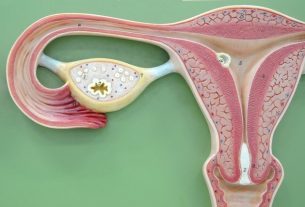Selene is an oral contraceptive, which contains ethinyl estradiol and cyproterone acetate in its composition, two substances that help regulate hormone levels in the body which, when altered, can cause increased skin oiliness, body hair or cysts in the ovaries. Therefore, it is indicated for the treatment of acne, mild hirsutism or polycystic ovary syndrome, for example.
This contraceptive can be found in pharmacies or drugstores and should only be used with the indication and guidance of a gynecologist, for the treatment of the conditions described above, and is not indicated exclusively to prevent pregnancy.

What is it for
Selene is indicated for the treatment of changes in the levels of androgen hormones circulating in the blood. Therefore, it is normally indicated for the treatment of conditions such as:
- Seborrheic or papules-pustulous acnewhich consists of the presence of rounded, hardened and reddish elevations on the skin containing pus;
- cystic nodule acnewith the formation of internal nodules under the skin, on the face, back and chest;
- Mild hirsutismcharacterized by the presence of hair in areas of the body that normally do not have hair, such as the face, chest, belly and inner thigh;
- Polycystic ovary syndromewhich can lead to symptoms such as irregular menstruation or difficulty getting pregnant.
It is recommended that treatment with Selene be stopped as soon as symptoms improve, as advised by the gynecologist.
Does Selene prevent pregnancy?
Although Selene is an oral contraceptive, it should not be used exclusively to prevent pregnancy, being indicated only for the treatment of symptoms of changes in androgen hormones in women.
If you need a contraceptive just to prevent pregnancy, you should consult your gynecologist to assess the best option. See how to choose the best contraceptive.
How to take Selene
Selene must be taken orally, 1 tablet per day for 21 consecutive days, always at the same time until the pack is finished. When vomiting or severe diarrhea occurs 3 to 4 hours after taking the pill, it is recommended to use another contraceptive method for the next 7 days.
To start treatment with Selene, when no other hormonal contraceptive has been previously used, the Selene tablet must be taken on the first day of menstruation and, after finishing the pack, a break of 7 days must be taken before starting the next one. .
If the woman is using another oral contraceptive with combined hormones, treatment with Selene should be started on the day following the interruption of the previous contraceptive, or at most, on the day following the last day of break or taking inactive tablets without previously used contraceptive hormone.
To switch from the vaginal ring or transdermal patch to Selene, you must start using Selene on the day you remove the vaginal ring or patch, or at the latest, on the day scheduled for the next application.
What to do if you forget to take Selene
When you forget less than 12 hours after the usual time, you must take the forgotten pill and take the next pill at the correct time. In this case, the contraceptive effect of the pill will be maintained.
When forgetting more than 12 hours after the usual time, the following table should be consulted:
Generally, a woman runs the risk of becoming pregnant when she forgets to take it in the first week of the pack and if the person has had sexual intercourse in the previous 7 days. In the 2nd or 3rd week, the risk of pregnancy is lower if the woman has taken it correctly in the previous weeks.
If you forget more than 1 tablet from the same pack, it is recommended to consult your gynecologist.
The treatment time with Selene must be advised by the gynecologist, according to the condition to be treated, but generally varies from 3 to 12 months.
Possible side effects
The most common side effects that may occur during treatment with Selene are headache, abdominal pain, nausea, diarrhea, weight gain, pain or increased sensitivity in the breasts, mood changes, depression or changes in sexual appetite.
Although they are rare, other side effects that may occur are intolerance to the use of contact lenses, vaginal discharge or thromboembolism.
Does Selene gain weight?
A common side effect of Selene treatment is increased body weight or swelling of the body due to fluid retention, which also leads to weight gain. However, this effect varies from woman to woman, and there are even cases in which there is a decrease in body weight.
Who shouldn’t use
Selene should not be used by people with a current or previous history of thrombosis or pulmonary embolism, heart attack, stroke, or angina pectoris that causes severe chest pain.
Furthermore, it should also not be used by people at high risk for clot formation or who suffer from a certain type of migraine accompanied by focal neurological symptoms, people with diabetes mellitus with blood vessel damage, with a history of liver disease, certain types of cancer or unexplained vaginal bleeding.
Selene should not be used by pregnant or breastfeeding women or people who are allergic to any of the components of the formula.
Bibliography
- RUAN, X.; et al. Use of cyproterone acetate/ethinylestradiol in polycystic ovary syndrome: rationale and practical aspects. Eur J Contracept Reprod Health Care. 22. 3; 183-190, 2017
- BITZER, J.; et al. The use of cyproterone acetate/ethinyl estradiol in hyperandrogenic skin symptoms – a review. Eur J Contracept Reprod Health Care. 22. 3; 172-182, 2017
- EUROFARMA LABORATORIOS SA Selene® (ethinyl estradiol + cyproterone acetate). 2017. Available at: <https://cdn.eurofarma.com.br//wp-content/uploads/2016/09/selene-bula-profissional-eurofarma.pdf>. Accessed on September 15, 2021

Sign up for our newsletter and stay up to date with exclusive news
that can transform your routine!
Warning: Undefined array key "title" in /home/storelat/public_html/wp-content/plugins/link-whisper-premium/templates/frontend/related-posts.php on line 12
Warning: Undefined array key "title_tag" in /home/storelat/public_html/wp-content/plugins/link-whisper-premium/templates/frontend/related-posts.php on line 13



